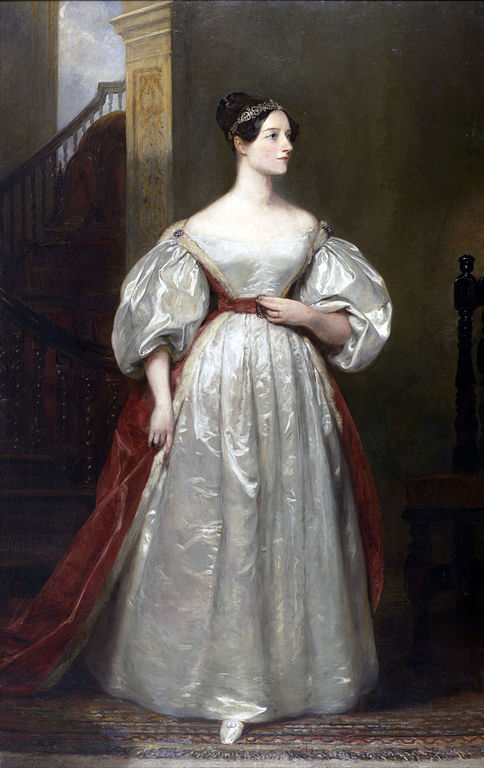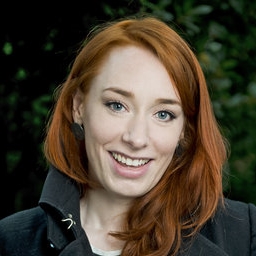The world’s first computer programmer
Today, 201 years ago, Ada Lovelace, considered by many to be the world's first analyst programmer was born.

Born into high society, Ada was the only legitimate child of the somewhat colourful character Lord Byron and the somewhat more respectable, highly educated, strictly religious Lady Anne Isabella Milbanke.
Ada was tutored by a number of great minds of the day, including Augustus de Morgan, he of ¬(A ∧ B) = (¬A ∨ ¬B) fame, social reformer William Frend, as well as her mother's friend Mary Somerville (who was jointly anointed with the German astronomer Caroline Lucretia Herschel as the first female members of the Royal Astronomical Society).
Mary Somerville introduced her teenage pupil to Charles Babbage (regarded as 'The Father of Computing') and it would be the work that Ada did with Charles on his Analytical Engine that would, when rediscovered and reappraised many years later, herald Lady Lovelace as the impressive figure she was.
Whilst Babbage's general purpose and steam-driven machine was never built, its plans were way ahead of its time, featuring punch card input (an idea taken from the Jacquard loom), memory and processing capabilities (including conditional branching), and a printer to print out the results of calculations onto paper.
Charles Babbage's Analytical Engine was not built due to the huge costs required to do so at that time - government funding not forthcoming given his prior failure to deliver them a fully operational earlier machine designed for purely calculations purposes, the Difference Engine, this earlier machine itself not being fully built until the turn of the 21st century (version N° 2).
In 1840 Babbage was invited to give a lecture at the University of Turin on his Analytical Engine, whereupon the engineer Luigi Federico Menabrea (who would go on later to become Prime Minister of Italy) wrote up his notes in the publication 'Sketch of Charles Babbage’s Analytical Engine'. Ada translated the paper from French to English, adding her own notes (three times the length of the original document).
It was Ada’s notes that conveyed her appreciation of the capabilities of the machine over and above its usage for purely calculation purposes, all whilst having no pretentions about the machines’s capabilities. Ada wrote, "It is desirable to guard against the possibility of exaggerated ideas that might arise as to the powers of the Analytical Engine ... The Analytical Engine has no pretensions whatever to originate anything. It can do whatever we know how to order it to perform. It can follow analysis; but it has no power of anticipating any analytical relations or truths."
Her comprehensive notes were divided into seven sections (A to G). In Note G she detailed how it could be used to compute Bernoulli numbers including a diagram of an algorithm - seen by many as the world’s first computer program.
Sketch of Charles Babbage’s Analytical Engine by Luigi Federico Menabrea with Ada's notes (in English)
Sadly, Ada died aged 36, the same age as her father. Her grandfather, Lord Byron's father, Captain John "Mad Jack" Byron died aged only 35, having squandered a signifcant portion of his second wife's fortune away. It would seem that neither longevity nor a propensity for financial stability would be traits passed down to Ada through the male line.
BBC Four documentary
Hannah Fry (TV Presenter)
BBC documentary presented by Dr Hannah Fry. Uploaded to YouTube as the programme is no longer available via the BBC hyperlink.
Adjust the speed to 1.25 times, for better quality viewing.
‘Bad Ass’ mathematician Doctor Hannah Fry made a BBC Four documentary in 2015 (two centuries after Ada’s birth) detailing the life of this complex and intriguing woman. Hannah paints a vivid picture of an intelligent woman constrainted by the times, yet possessing a gifted mind and wayward tendencies.
Lord Byron would leave Ada whilst a baby and they would never be together again during her lifetime, her parent's short marriage not being a happy one. Byron quite likely married Ada's mother in part to escade his debts and rumours of incest with his half-sister Augusta.
Her foresight was so extraordinary that it would take another hundred years and Alan Turing to recognise the significance of her work..
Hannah Fry (Mathematician)
The programme covers Ada's childhood, her poor health and highly-educated mother's provision for her own daughter's education; her work with Charles Babbage; encounters with other notable names of the times; her later years where Ada would unfortunately squander money like her father and grandfather before her, finally sucumming to uterian cancer (a cancer which most women survive today).
Lady Ada Lovelace had affairs - they were all at it back then - even eloping with one of her tutors at one point. She drank, swore, gambled and was said to be addicted to drugs and quite possibly bipolar.
Ada's notes were not appreciated until they were rediscovered during WWII as part of Alan Turing’s research at Bletchley Park, where he would produce the British version of the Bombe electromechanical machine used to decipher Germany’s Enigma encrypted messages. Her notes would go onto be republished in 'Faster Than Thought: A Symposium on Digital Computing Machines' by the English scientist Bertram Vivian Bowden in 1953, reintroducing Ada's work to the world.
Legacy
There are those who would question whether Ada could be seen as the world's first programmer, given that the Analytical Engine was never built and her algorithm never executed. There are also those detractors who claim Ada should be seen very much in Babbage's shadow, he did after all design the Difference and Analytical engines. They also question whether she should be thought of more as the technical author of Babbage's work and ideas.
In response, correspondence between Ada and Babbage reveal her capacity for leaps of imagination as to uses of the Analytical Engine that Charles Babbage had not considered. And it was her Lady Ada Lovelace, in her notes appended to those of Luigi Federico Menabrea's, where she outlines using the Analytical Engine to calculate Bernoulli numbers, that reveal her to be a competent computational analyst, or programmer to use modern lingo.
The Ada computer programming language (named after her) was developed between 1977 and 1983, first appearing in 1980. The military standard ('MIL-STD') reference manual for the language was approved on December 10, 1980 (Ada's birthday) and given the number MIL-STD-1815 in honour of her birth year. Ada Lovelace day wasn’t founded until 2009 and started as an international day of celebration marking the achievements of women in science, technology, engineering and mathematics (STEM).
Women In Technology
Held on the second Tuesday of October every year
On Ada Lovelace day this year (11th October), an article on how diverse tech companies actually are was published in The Guardian and the findings were not great. Google, Apple, Microsoft, Facebook and Twitter, only had between 16% and 23% of women in technical roles. Clearly there's still a long way to go.
There aren't enough women in IT, nor enough women in STEM roles as a whole. Diversity brings different perspectives to the workplace which can provide greater collective insights and reduce groupthink.
I have spent too many meetings to remember, in which the number of women in attendance was either none or one. I have worked with people of a multitude of cultural backgrounds and skin colour but very few women who were actually coders or architects - projects managers, testers, managers and recruiters yes - but not developers.
Attitudes are changing, back when I studied for my degree in the Mathematics and Computing department of Durham University, there were three girls in the first year of fifty students (one of whom dropped out at the end of the first term). If you told a girl you studied Computing back then it was seen as a faux pas, how times have changed! They may not be interested in the subject but they no longer recoil in disdain (they did actually do that).
The hashtag #WomenInTech is used daily on Twitter, to forward the cause. FindingAda is the website dedicated to Ada Lovelace Day: a celebration of women in STEM.
The Data Revolution
An interesting bit of TV
Hannah Fry (TV Presenter)
A witty and mind-expanding exploration of data. This high-tech romp reveals what data is and how it is captured, stored, shared and made sense of.
Fellow data nerds should really like this BBC Four programme on the "new currency of our times", Data.
Also presented by Doctor Hannah Fry (she is everywhere now), this programme explores the world of data, covering topics such as the historical examples of data gathering, early efforts to automate the collation of big data, and how data is transmitted.
There is an amusing exercise using students to demonstrate the benefits of data transfer utilising packet switching, as well as a very intersting look at the elegant Shannon Entropy equation: devised by Claude Shannon who - in attempting to overcome the issue of noise on analog telephone lines - came up with a way to digitise all information.
The BBC Four web page for the programme suggests this show will only be around until the end of December. However, a search on YouTube should prove fruitful when it is no longer available from the BBC.
